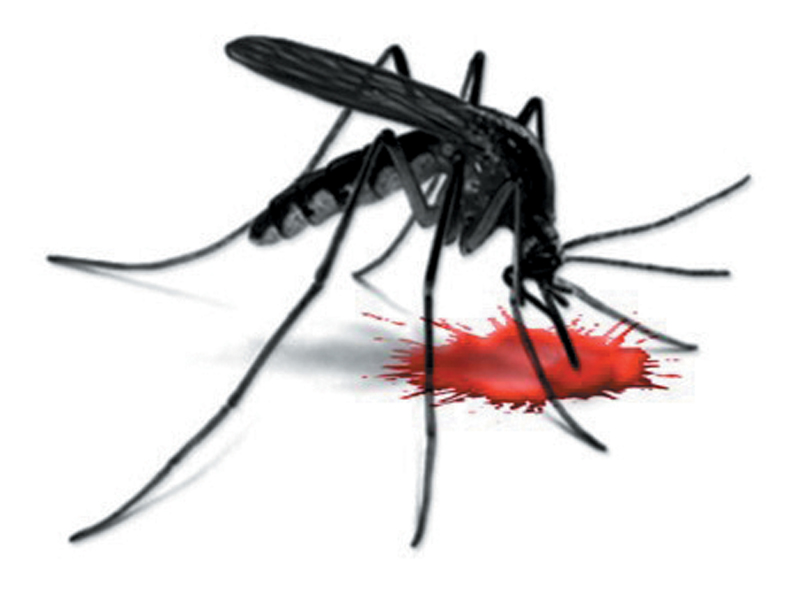
Not an unfamiliar disease to Pakistan, the dengue epidemic was at its worse for Sindh in 2013 with 5,500 people diagnosed — the highest number of cases ever to be reported in the province.
According to the Dengue Surveillance Cell's annual report for 2013, around 32 people lost their lives in Sindh because of dengue.

"This number does not even reflect the entire number of patients as most cases weren't even reported. We estimate that at least 15,000 people were affected by this disease in Sindh this year," said the director of the National Institute of Blood Diseases, Dr Tahir Shamsi, while talking to The Express Tribune. There are around 18 big and 200 small nullahs in the city which are the breeding grounds for spreading dengue fever, he added.
Even though the year is coming to an end, it appears bad luck isn't over for the people of the province as 2014 has already been predicted to bring with it more cases of dengue. According to Dr Shamsi, there are chances that dengue larva breeding will start after the rains in January and February and by April, the number of cases could reach a dangerous level. Concrete steps by the Sindh government to prevent the epidemic, however, have yet to be taken while experts believe that a plan should have already been set in motion.
"The strategy for next year is under consideration and hopefully, it will be finalised in two weeks. We will discuss our strategy with the media and their cooperation is greatly needed to create awareness among the masses as the government alone cannot deal with the issue without the participation of the general public," said the focal person for the Sindh Dengue Surveillance Cell, Dr Shakeel Aamir Mullick while talking to The Express Tribune on Thursday, stressing that the government "was very concerned" about the increasing dengue cases. "We can make the city dengue-free with the participation of the muhallahs and people. They should not throw garbage everywhere and should cooperate with the government in its efforts to deal with this deadly virus. Even fruit and vegetables vendors should cover their products with a net cloth as every little effort will help control the diseases."

To eradicate mosquitoes, the government announced many spray drives but no effective spray campaign was carried out this year. An official in the Karachi Metropolitan Corporation, on the condition of anonymity, claimed that initially people were suspicious about the performance of the department that was responsible for carrying out fumigation drive in the city. "Despite getting fumigation done in all the areas, the cases of dengue were not decreasing. We then requested the relevant authority to send the chemical [for fumigation] to a laboratory for testing. After the tests, we found out that it was substandard," he claimed.
When asked why substandard medicines were provided for the fumigation, Dr Malik replied, "We don't have control over medicines and it has nothing to do with the Dengue Surveillance Cell. We are only responsible for monitoring. Surveillance means data collection for action."
Around 25,000 people have been affected by the dengue virus from 2006 till 2013 while 150 lost their lives across Sindh - based on the reported cases. Almost 67 per cent of the patients were male and only 3 per cent were women, according to the report.
Published in The Express Tribune, December 27th, 2013.
COMMENTS (3)
Comments are moderated and generally will be posted if they are on-topic and not abusive.
For more information, please see our Comments FAQ












1736508423-0/Express-Tribune---News-Desk-(9)1736508423-0-270x192.webp)










No surprise as the Health department money also goes to pockets of corruption party waderas
We must send our officers to China to learn to control these kind of disease, invite a few Chinese experts on deputation to guide our depts to control these.